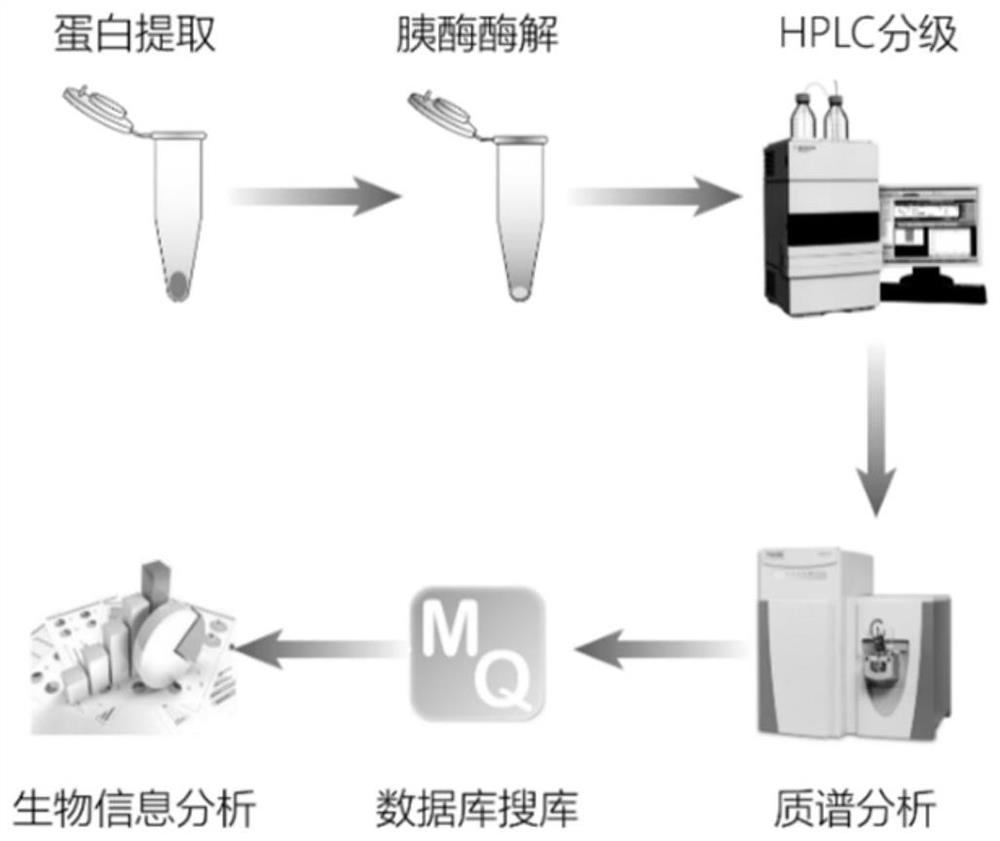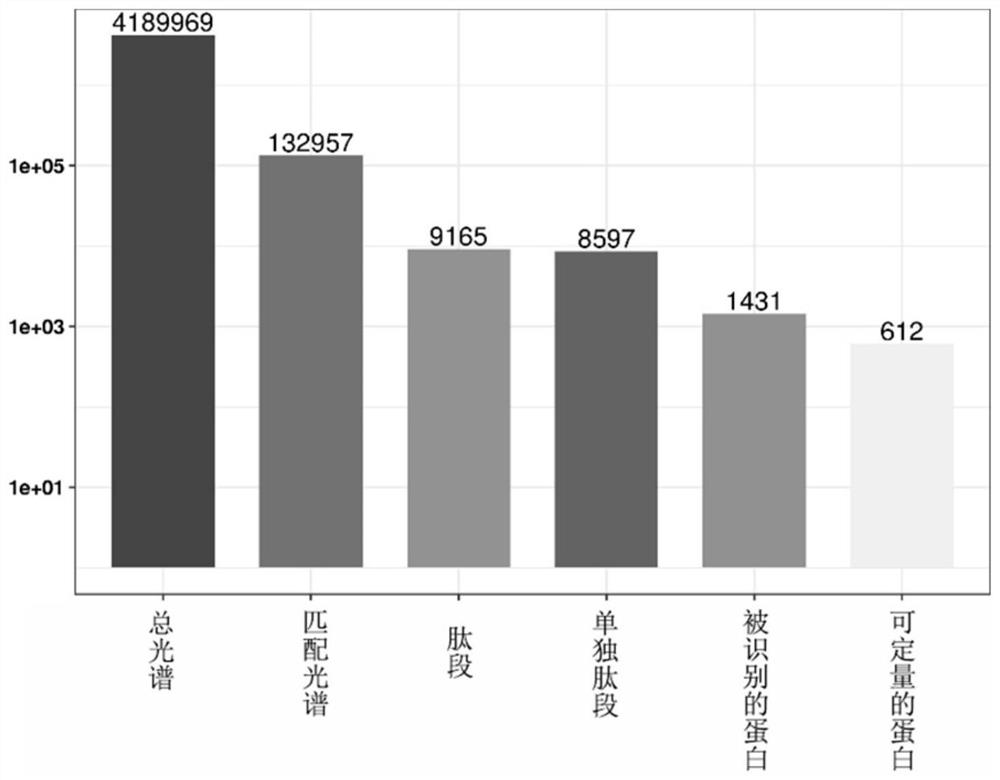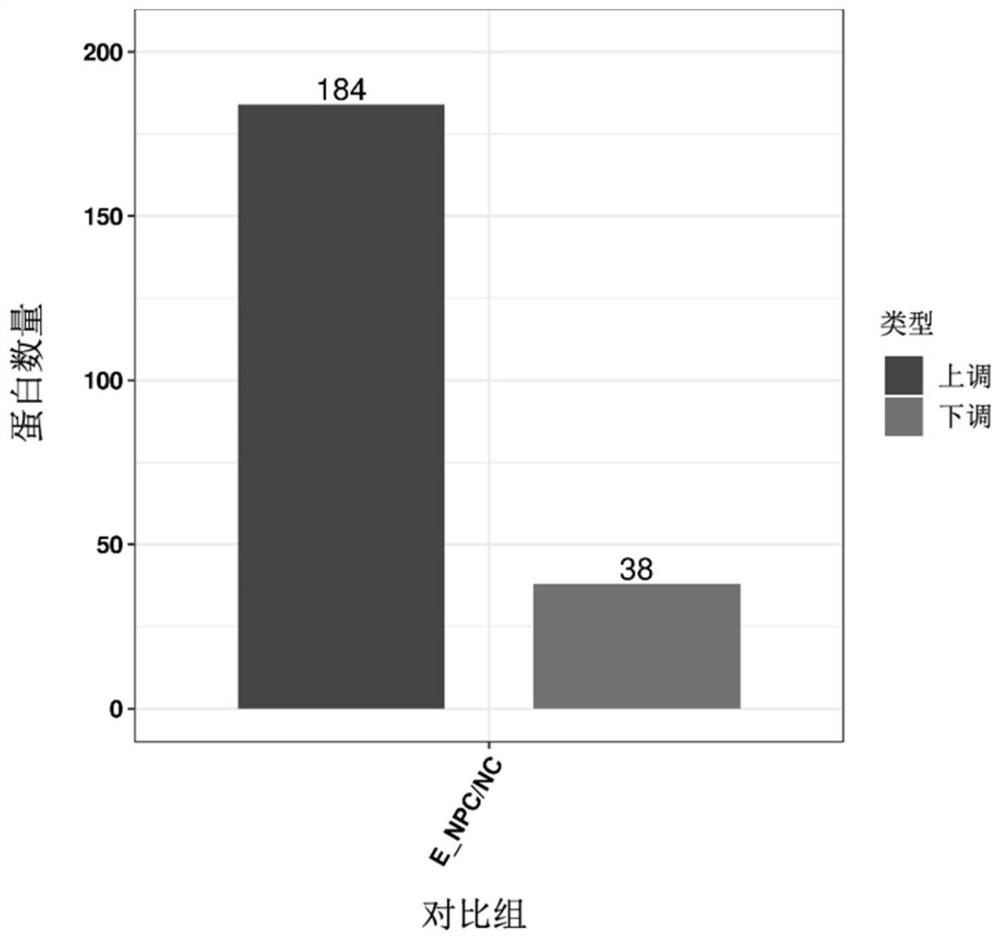Plasma exosome protein marker for early screening of nasopharynx cancer and application of plasma exosome protein marker
A nasopharyngeal carcinoma marker technology, applied in the field of plasma exosome protein markers, can solve the problems that there are no nasopharyngeal carcinoma exosome protein markers and molecular classifiers
- Summary
- Abstract
- Description
- Claims
- Application Information
AI Technical Summary
Problems solved by technology
Method used
Image
Examples
Embodiment 1
[0050] Screening and Identification of Example 1 Protein
[0051] Select 10 cases of early nasopharyngeal carcinoma (E-NPC) and 10 healthy people (NC) plasma samples, match them according to age and sex, and use non-standard quantitative technology and quantitative proteomics technology based on mass spectrometry to organically combine after separating proteins in serum. Quantitative proteome research on samples ( figure 1 ).
[0052] In the present invention, the inventors have identified 1431 proteins in total, of which 612 can be quantified ( figure 2 ). Taking 1.5 times as the threshold for differential expression changes, and using the statistical test t-test p-value image 3 , Figure 4 ).
[0053] Protein quantitative repeatability was assessed by principal component analysis (PCA) and relative standard deviation (RSD) statistical analysis methods. PCA showed a good degree of clustering among replicate samples, indicating good quantitative replication ( Figure 5 ...
Embodiment 2
[0056] Example 2 Quantitative Proteomics Analysis (PRM)
[0057] EPB41 (P11171), SELP (P16109), ANK1 (P16157), CA1 (P00915), BLVRB (P30043), SPTA1 (P02549), SPTB (P11277), PKM ( ( P50552) expression difference in 15 NC and 10 E-NPC samples.
[0058] The results showed that the ROC curve AUC values of CA1, EPB41, ANK1, SPTA1, BLVRB, SELP to distinguish NC and E-NPC were 0.9333, 0.87, 0.8267, 0.8467, 0.8633, 0.75 ( Figure 7 ), indicating that this marker can better distinguish NC from E-NPC. A total of 6 proteins including CA1, EPB41, ANK1, SPTA1, BLVRB, and SELP had significant differences in expression, as shown in the box plot of relative protein expression levels ( Figure 8 ) and relative expression level heatmap ( Figure 9 ), it can be used as a protein marker of E-NPC. The combination of CA1, EPB41, ANK1, SPTA1, BLVRB, and SELP has good sensitivity and specificity in distinguishing NC and E-NPC, and the ROC curve AUC is 0.8516 ( Figure 10 A). The combination o...
Embodiment 3
[0060] Embodiment 3 clinical case
[0061] In clinical practice, NC and E-NPC patients are randomly selected for verification testing, and 5 cases of each of NC and E-NPC patients are selected below to demonstrate the actual effect of the present invention.
[0062] Healthy person Huang Moumou, female, 47 years old, the relative abundance of proteins verified by PRM is: CA1 (0.07), EPB41 (0.12), ANK1 (0.06), SPTA1 (0.13), BLVRB (0.13), SELP (0.09);
[0063] Healthy person, male, 62 years old, the relative abundance of proteins verified by PRM is: CA1 (0.07), EPB41 (0.14), ANK1 (0.05), SPTA1 (0.11), BLVRB (0.10), SELP (0.06) ;
[0064] Healthy person, male, 47 years old, the relative abundance of proteins verified by PRM is: CA1 (0.13), EPB41 (0.13), ANK1 (0.12), SPTA1 (0.14), BLVRB (0.30), SELP (0.35) ;
[0065] Healthy person, male, 48 years old, the relative abundance of proteins verified by PRM is: CA1 (0.19), EPB41 (0.07), ANK1 (0.12), SPTA1 (0.14), BLVRB (0.05), SELP ...
PUM
 Login to View More
Login to View More Abstract
Description
Claims
Application Information
 Login to View More
Login to View More - R&D
- Intellectual Property
- Life Sciences
- Materials
- Tech Scout
- Unparalleled Data Quality
- Higher Quality Content
- 60% Fewer Hallucinations
Browse by: Latest US Patents, China's latest patents, Technical Efficacy Thesaurus, Application Domain, Technology Topic, Popular Technical Reports.
© 2025 PatSnap. All rights reserved.Legal|Privacy policy|Modern Slavery Act Transparency Statement|Sitemap|About US| Contact US: help@patsnap.com



